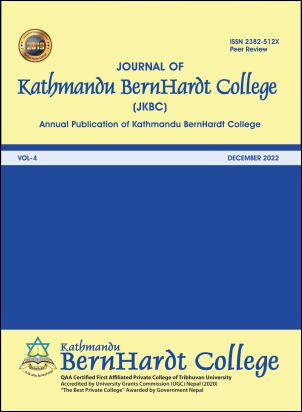Relation between Liquidity and Profitability of Nabil Bank and Everest Bank Limited
DOI:
https://doi.org/10.3126/jkbc.v4i1.61425Keywords:
Liquidity, Profitability, Asset quality, Commercial banking, Financial performance, Risk ManagementAbstract
This research aims to examine the relationship between liquidity and profitability, focusing on two prominent commercial banks in Nepal: NABIL Bank Limited and Everest Bank Limited (EBL). The study utilizes correlation and regression analyses to investigate the impact of liquidity on the profitability of these two banks. The main findings of the study are derived from the analysis of financial data. The study employs a quantitative research approach, utilizing financial data from both banks over a ten-year period (i.e., 2012/13 to 2021/22). Various liquidity and profitability ratios, including credit to total deposit ratio, cash and bank balance to total deposit ratio, total liquid fund to total deposit ratio, a total liquid fund to current liabilities ratio, asset quality ratio and return on assets, are calculated and analyzed. Findings reveal that while there is no significant relationship between certain liquidity ratios and profitability, the cash and bank balance to total deposit ratio (CABTDR) positively influences profitability for NABIL. Additionally, the total liquid fund to total deposit ratio (LFTDR) and total liquid fund to current liabilities ratio (LFTCLR) negatively impact profitability in both banks. The study emphasizes the importance of maintaining optimal liquidity levels and improving asset quality to enhance profitability. Overall, liquidity's influence on profitability is relatively weaker compared to asset quality.




